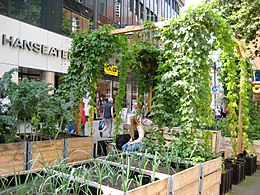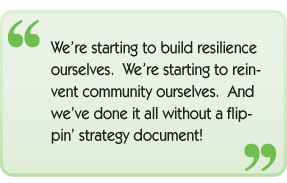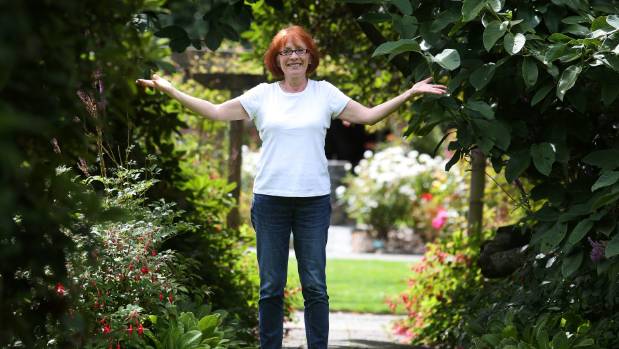A ‘food revolution’ isn’t much of a revolution when only a tiny proportion of the population has enough disposable income to get involved. Many people’s household budgets, especially in these austere times, simply can’t stretch to diets consisting mainly of the healthy options found in most supermarkets. But look around you: what if all the unused space in your community was full of delicious, fresh, pesticide- and genetically modified organism (GMO)-free ‘incredible edibles’, grown by, for and available to everyone? A wonderful idea that should inspire plenty of activity in 2013!

Join the food revolution
More and more people are waking up to industrial agriculture’s list of shame. It goes something like this: control of the world’s seed supply for staple crops by a handful of companies, most notably Monsanto; a major shift toward genetically modified (GM) crops; intensive pesticide use; long-distance trade and freight; huge acreages of monoculture; loss of biodiversity in rural areas; depleted soils; and increasing amounts of soil-free agriculture.
And it doesn’t end there: post-harvest, we’ve got crops being picked unripe, lots of artificial ripening, reduced nutrient content and – to eliminate any unwanted bugs – more and more irradiation. These and others are the reasons why people in their millions are becoming alive to the benefits of putting healthy, clean fuel into their bodies. Yes, there’s a food revolution in progress!
“Let them eat cake!” (or junk food)
A recent Italian study attempted to quantify whether low-income groups have more difficulty sticking to a healthy diet than high-income groups. Using the Mediterranean diet as their textbook healthy diet, the researchers compared the two groups among 13,000 people included in the large ‘Moli-Sani’ epidemiology project in the Molise region of central Italy.
Compared with the lowest-income group, those in the highest-income group were up to 72% more likely to stick to the Mediterranean diet. Because the lower-income participants ate more processed or junk food, “Low-income people report 36% of [sic] obesity compared to 20% in the uppermost income class,” according to study author Licia Iacoviello. The authors concluded that, “A higher income and education are independently associated with a greater adherence to [Mediterranean Diet]-like eating patterns and a lower prevalence of obesity”.
These results echo those of the recent UK King’s Fund project. This research found that unhealthy diet and lifestyle habits, in this case inadequate fruit and vegetable intake, smoking, heavy drinking and inadequate exercise, tended to be clustered and most prevalent among the lowest socio-economic groups.
The world is upside down
Among the factors driving these trends are education, cultural norms and the premium price of high-quality, fresh produce – whether organic or simply farm fresh and locally sourced. Organically certified items are undeniably more expensive in supermarkets, although better value can be found through judicious use of farmers’ markets, buying direct at the farm gate or signing up to organic ‘box schemes’ or community-supported agriculture (CSA) programmes.
Governments, who are heavily entangled with the likes of Monsanto and other biotech companies, are never going to admit that low-input, pesticide-free or organic (uncertified or certified) agriculture can feed the world – despite even the United Nations (UN) acknowledging its potential to deal with the drastic food security issues facing the world, especially in in less developed countries.
Enter the Incredible Edibles!
Disused urban areas in the ghettos or slums of a big city might have been a more likely starting point for the Incredible Edibles movement. But in fact, we’re talking a small town, 17 miles north-east of Manchester, UK.
Incredible Edibles is the brainchild of Pam Wadhurst and her fellow residents, and we think it’s one of the best ideas we’ve come across in a while. Like all the best ideas, it’s utterly simple at heart: Pam and her co-conspirators have been planting herbs, fruits and vegetables in as much of the wasted space in their community of Todmorden as they can. Crops have been planted outside the health centre, along canal towpaths, in front of the local police station...in short, wherever there’s soil that could better be employed growing something useful. Todmorden residents are ‘eating the landscape’.
Snowballing success
So successful is the project that ‘vegetable tourists’ have been visiting Todmorden, keen to learn how to start doing the same in their own communities. As Pam says, from an idea dreamt up one evening around a kitchen table, “We’re starting to build resilience ourselves. We’re starting to reinvent community ourselves. And we’ve done it all without a flippin’ strategy document!” People are encouraged to help themselves to the produce: “This is about sharing, and investing in kindness”, says Pam.

Watch her TED Talk and we defy you not to be inspired with how the project is snowballing, with benefits for everyone: from children learning how to grow food and being on the board of companies started up by the community; to students on the adult learning courses designed by interested academics; to the nearly 50% of local traders whose bottom lines have grown thanks to the project.
“If you eat: you’re in!” says Pam. And she’s right. It doesn’t take much imagination to see that, if every village, town and city followed Todmorden’s example, most of our food troubles would disappear overnight. So if you’re looking for a New Year’s resolution, why not make your mission to get members of your own community involved in eating your own landscape?

Call to action
- Can you get you local community inspired, as Pam did? Get together with some friends, find a kitchen table and start planning. Get some ideas from the Todmorden website, perhaps even visit them to get a better flavour of what’s going on and how to get started
- Get further inspired by finding out how similar projects are going on in other parts of the world, such as those being spawned by the Indian Youth Climate Network in and around New Delhi, as shown in a separate story this week








Comments
your voice counts
07 February 2013 at 8:33 am
Everyone likes a shortcut or simple step, that's why they prefer to go for junk foods and all. But we have to understand that it's not healthy at all. Try to eat only green and fresh vegetables.
14 March 2013 at 8:45 pm
People have always looked for the easy way in everything and in this case, the easy option is fast food. They don't want understand the risks they are exposing themselves to and that their health can be improved with a proper diet. I managed to change my diet when I discovered the gluten free bread and I'm very pleased with the results.
04 March 2014 at 2:21 am
We have been designing edibles into our landscape projects. Our clients love it. Generally it is a subtle addition that they greatly enjoy. We place blueberry bushes in place of more common deciduous shrubs found in the. The clients, get to eat the landscape
John
18 April 2014 at 6:48 am
If we want to live healthy life, eating organic food is the only way for it. Great article, thanks for sharing.
16 September 2014 at 2:49 pm
Eating healthy is essential but many people don't know how to do it. This article gives some great advice on how to do it!
Your voice counts
We welcome your comments and are very interested in your point of view, but we ask that you keep them relevant to the article, that they be civil and without commercial links. All comments are moderated prior to being published. We reserve the right to edit or not publish comments that we consider abusive or offensive.
There is extra content here from a third party provider. You will be unable to see this content unless you agree to allow Content Cookies. Cookie Preferences